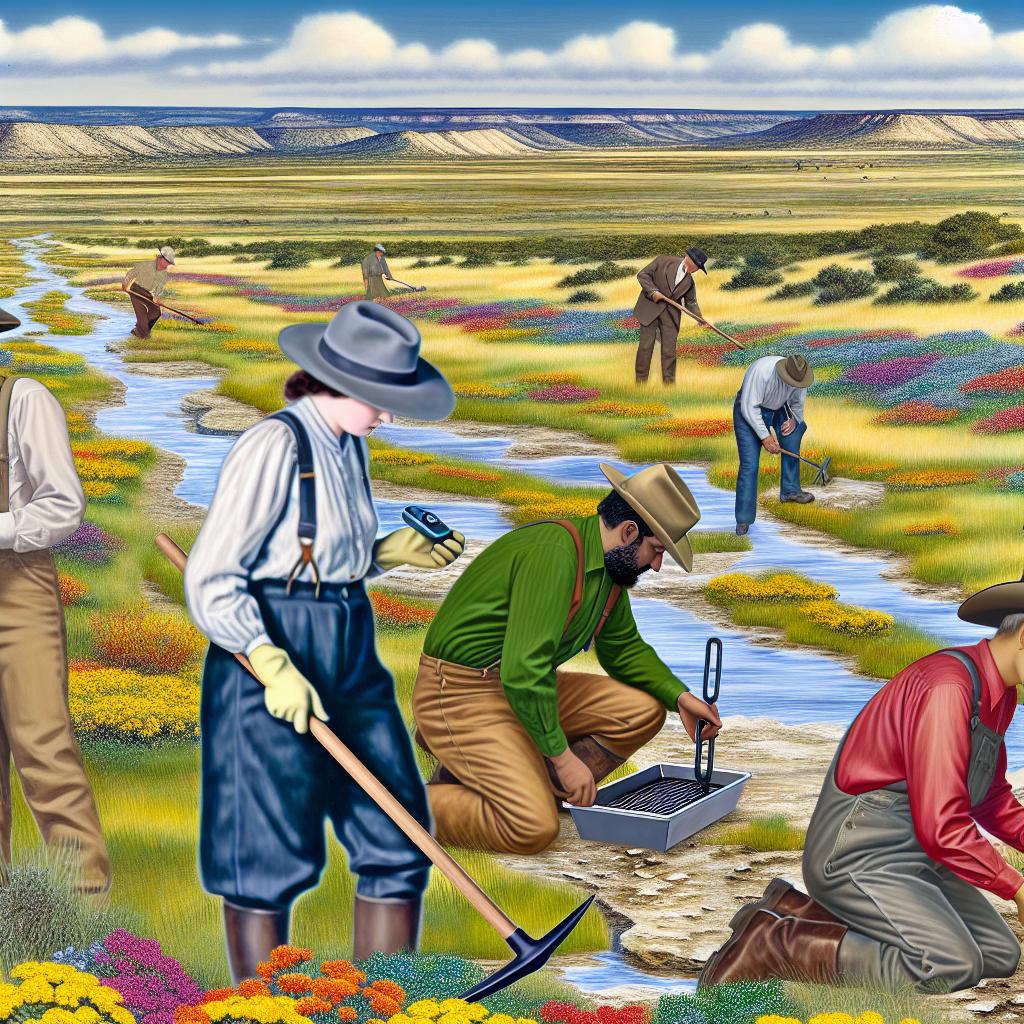Introduction to Gold Prospecting in Texas
Gold prospecting in Texas may not have reached the legendary status of regions like California or Alaska, known for their rich gold deposits, however, it still provides ample opportunity for enthusiasts captivated by the challenge of discovering precious metals. Though Texas owes much of its fame to its substantial oil reserves, the state also possesses regions where those keen on gold prospecting might find success. It may not be the first location that comes to mind for gold prospectors, yet it provides unique opportunities and experiences for those willing to explore its hidden treasures.
The Geology of Gold in Texas
To embark on a successful gold prospecting endeavor in Texas, it is imperative to first understand the geological makeup of the land. Gold in this state is predominantly found within the Llano Uplift area, characterized by its metamorphic and igneous rocks. These geological formations occasionally contain gold, albeit typically in small quantities. Unlike the more renowned western states where substantial lode and placer forms of gold are prevalent, Texas mainly offers placer deposits. Aspiring prospectors would benefit from studying the geological history and rock formations of Texas to increase their chances of a fruitful search.
Llano River and Surrounding Areas
The Llano River holds particular significance for gold prospectors eager to uncover gold in Texas. Although the gold found within this region is frequently fine and dispersed across small deposits, the river and its network of tributaries have been historical sources of placer gold. Aspiring prospectors are often advised to concentrate their efforts on areas such as gravel bars and the inner bends of the river, where gold particles have a tendency to gather due to the river’s natural flow dynamics. Patience and precision play a critical role in extracting these fine particles, requiring both skill and perseverance to succeed.
Other Regions Worth Exploring
While the Llano Uplift remains the most acknowledged region for gold prospecting in Texas, there are other areas that hold potential and may offer unexpected surprises to those who choose to explore:
– Concho River: The Concho River region is one where some prospectors have reported success. The gold found in this area tends to be fine, necessitating careful techniques such as panning to extract it effectively.
– Red River: This river has a history of yielding small amounts of gold, particularly in sections close to the Texas-Oklahoma border. Prospectors focused on this area may encounter promising opportunities, leveraging the river’s historical gold-bearing potential to guide their search.
Methods and Equipment for Texas Prospecting
Given the prevalence of fine gold deposits in Texas, the panning technique remains the most widely accepted and effective method for prospectors in the region. This traditional method involves using a pan to separate gold from other materials in riverbeds and alluvial plains. However, prospectors often complement panning with additional tools to enhance their experience. Utilizing sluice boxes, for instance, can help process larger volumes of sediment more efficiently, while metal detectors might aid in pinpointing specific areas of interest. It is of utmost importance to select equipment appropriate for the often challenging and nuanced conditions that define gold prospecting in Texas. Understanding the tools and their applications ensures a more productive and rewarding prospecting adventure.
Regulations and Permissions
Before engaging in any prospecting activities within Texas, it is crucial to acknowledge the regulations that govern gold prospecting in the state. Compliance with these rules is mandatory to prevent legal complications. Land ownership must be verified, and prospectors are required to obtain necessary permissions from landowners or relevant governmental authorities. Special care must be taken to avoid disturbing archaeological sites or protected lands, as violations can result in serious legal repercussions. Being well-informed about these regulations ensures that prospectors can pursue their hobby responsibly and sustainably.
Conclusion
Even though Texas may not offer the abundance of opportunities for gold prospecting found in some western states, dedicated enthusiasts continue to find joy in the experience. The process of seeking gold involves not only technical knowledge of local geology but also the right combination of tools and methods tailored for the specific conditions present in Texas. Despite the challenges posed by the quality and distribution of gold deposits, small quantities of gold are within reach for those who approach the endeavor with dedication and attention to detail. To gain further insights and practical guidance on Texas prospecting opportunities, it is advisable to join specialized forums dedicated to this hobby or to seek advice from local prospecting clubs. These communities provide valuable resources and camaraderie, enhancing the overall experience of gold prospecting in Texas. Through patience, practice, and community engagement, enthusiasts can uncover delightful surprises hidden within the Texan landscape, continuing the rich tradition of gold prospecting in the area.


